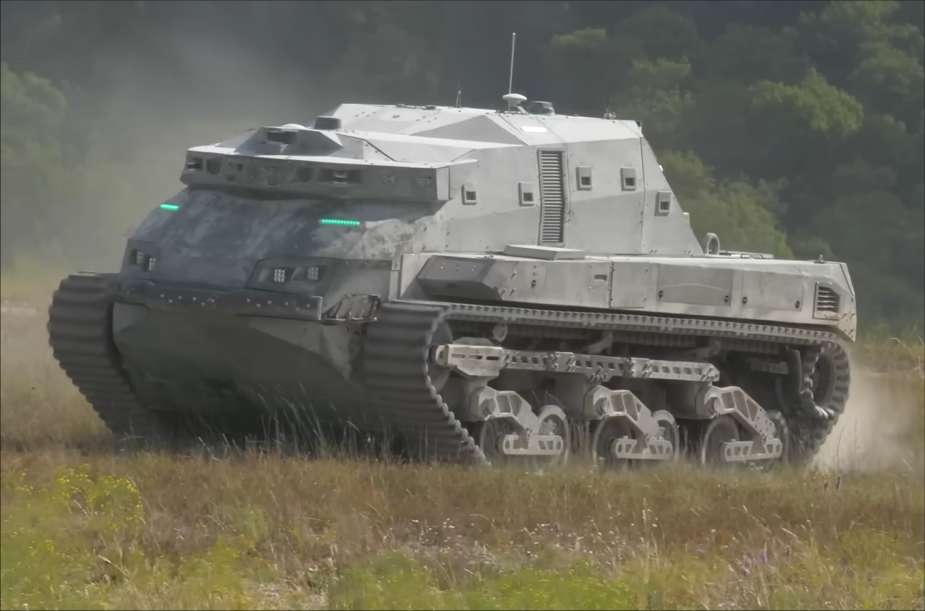Breaking news
US Tests Mysterious Autonomous Robotic Handling Platforms RHP Vehicles for RACER Program.
On April 24, 2024, the US Defense Advanced Research Projects Agency (DARPA) conducted tests on the RACER Heavy Platform (RHP) vehicles. These tests are part of the Robotic Autonomy in Complex Environments with Resiliency (RACER) program, which aims to enhance autonomous navigation technologies.
Follow Army Recognition on Google News at this link

Video footage of the autonomous RHP during a test. (Picture source: Darpa)
The heavy vehicles, dubbed RHP, are based on the Textron M5 platform, which was developed and used in the US Army's robotic combat vehicle campaigns, and were outfitted by Carnegie Robotics to integrate the RACER autonomy hardware stacks and software. The RHP is a 12-ton, 20-foot-long tracked vehicle designed to autonomously navigate diverse terrains. This series of tests focused on the vehicle’s ability to autonomously navigate a 15-square-mile area characterized by a variety of obstacles such as vegetation, rocks, and rugged terrain.
This latest phase of the RACER program, which began in autumn 2023, included its fourth experiment (E4). This phase featured the initial joint testing of the RHPs with the smaller, 2-ton, 11-foot-long RACER Fleet Vehicles (RFVs). The tests were conducted by teams from NASA’s Jet Propulsion Laboratory and the University of Washington on military training grounds in Texas.
These vehicles are designed to complement the dimensions and functionalities of future robotic or optionally crewed combat vehicles, thus expanding the scope of autonomous military applications. The successful demonstration during E4 underscores progress toward the program’s goals of refining and enhancing the adaptability and efficiency of RACER’s autonomous algorithms in challenging environments.
DARPA also showcased the exceptional off-road ground autonomy speed of these vehicles during the tests, marking the second phase of the RACER initiative and reflecting the agency’s ongoing cycle of autonomy development and testing.
Stuart Young, the RACER program manager, emphasized that having two radically different types of vehicles aids the program in advancing toward the goal of platform-agnostic autonomy in complex, mission-relevant off-road environments, which are significantly more unpredictable than on-road conditions. He added that higher goals have been set for off-road autonomous speed and lower intervention rates during Phase 2, and that the two platforms enable RACER to demonstrate the adaptability and resilience of autonomous software in complex, militarily relevant environments.
The teams involved in Phase 2 of RACER include the University of Washington and Overland AI; NASA’s Jet Propulsion Laboratory, Offroad Autonomy, Georgia Institute of Technology, and Duality Robotics. The US Army continues its large-scale robotization, but they are not alone as the Russians are also extensively studying what robots can bring to the Armed Forces since the conflict in Ukraine.
Defense News April 2024

























